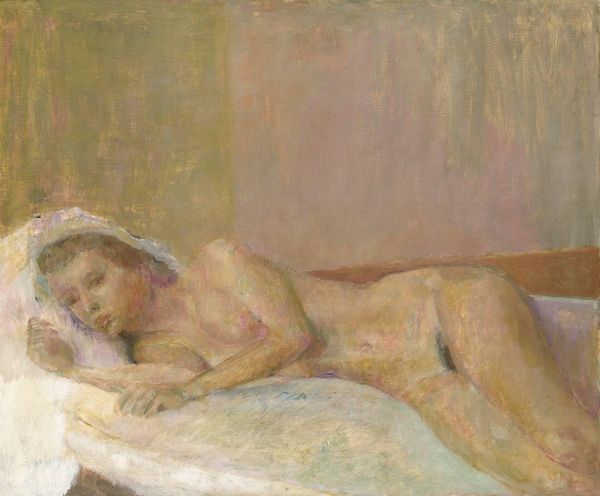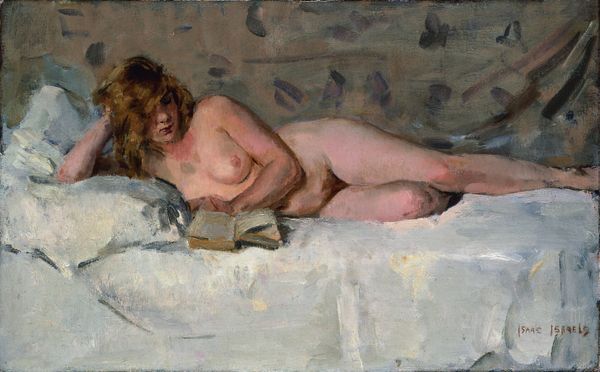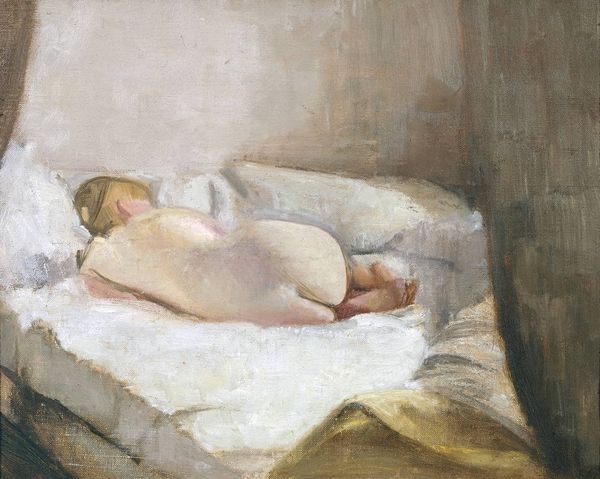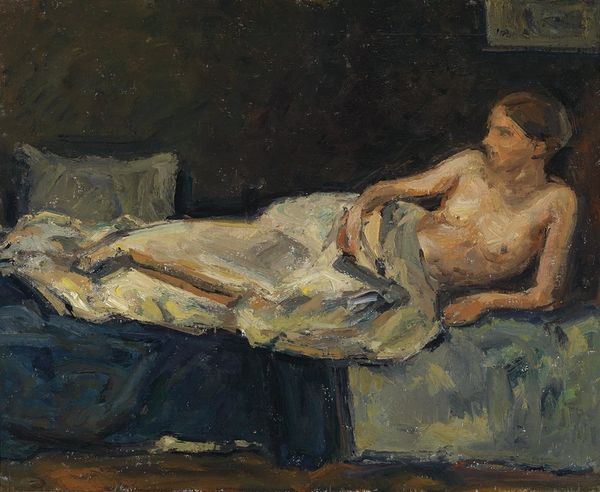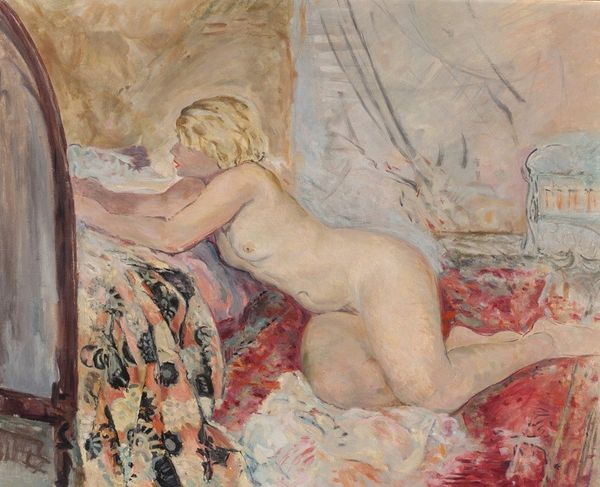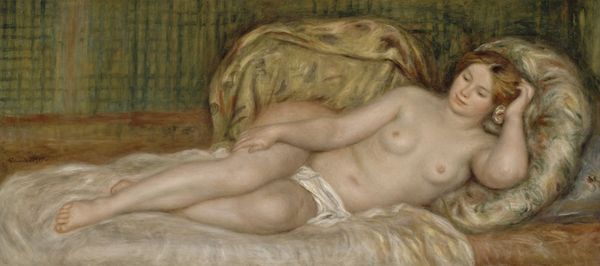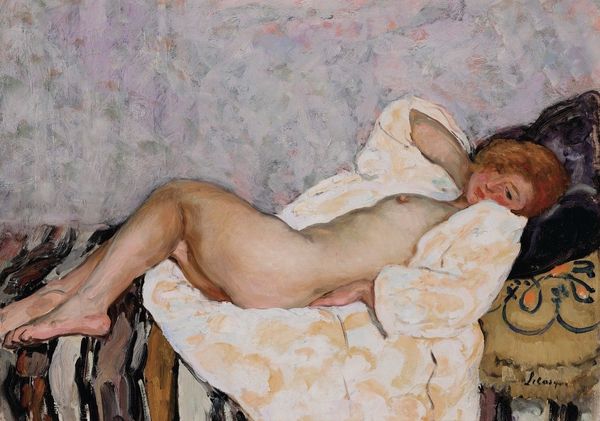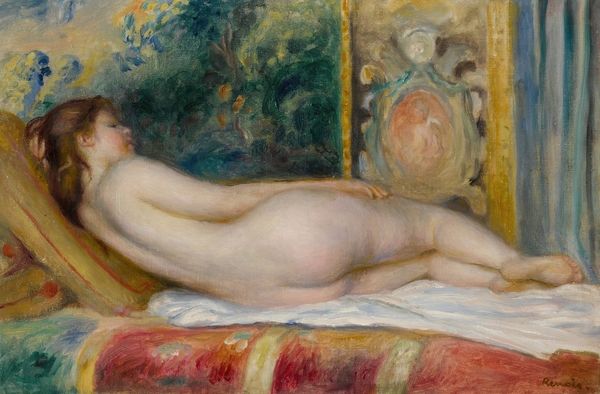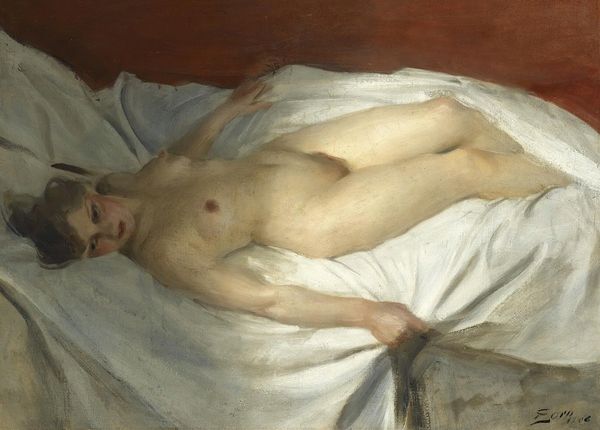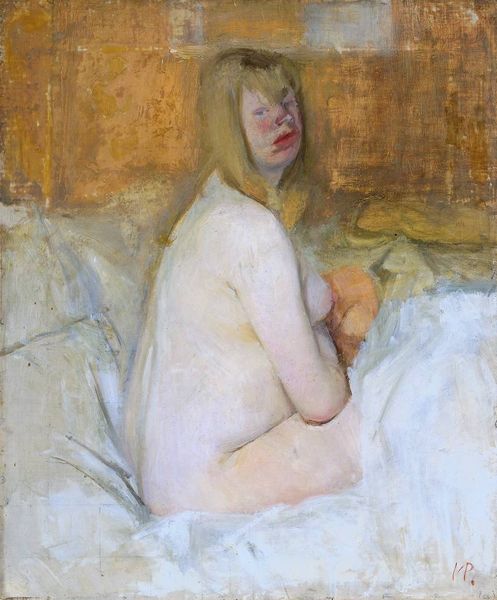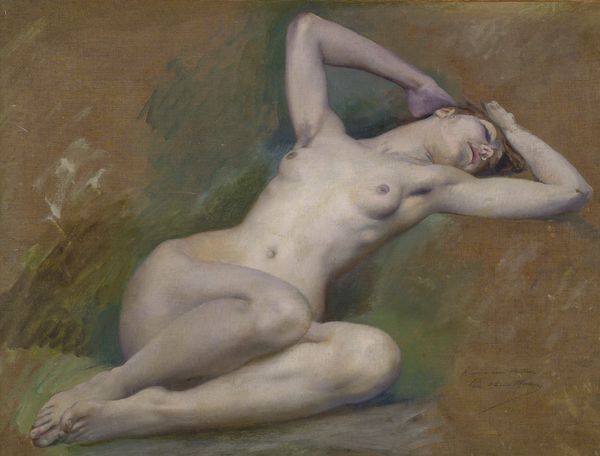
painting, oil-paint, impasto
#
portrait
#
figurative
#
painting
#
oil-paint
#
figuration
#
oil painting
#
impasto
#
intimism
#
romanticism
#
painterly
#
russian-avant-garde
#
genre-painting
#
nude
#
realism
Copyright: Public Domain: Artvee
Curator: Welcome to this intimate portrayal titled "The Artist’s Wife Natalia Nordman Sleeping," attributed to Ilya Repin. It presents a very private, vulnerable scene, wouldn't you agree? Editor: Absolutely. The thick, almost sculpted application of oil paint—the impasto technique—is what strikes me first. You can almost feel the weight of the material itself. What does it tell us about Repin’s process? Curator: Well, considering Repin's social realist leanings and his engagement with the Russian avant-garde, I see this painting, though a personal depiction, as a subtle commentary on bourgeois domesticity. Is this how society is? He observes. Editor: I see it more in terms of its materiality. The roughness of the paint suggests a rapid, almost urgent creation. Look at the contrast between the black stockings and the pallid flesh; it speaks volumes about texture and surface, the sheer physical act of painting. Curator: The way he captures Natalia’s sleep hints at a particular dynamic between artist and muse. It’s as if he's making her simultaneously visible and invisible in the art world, a question of control. Was she comfortable or even aware of being observed? What were women's roles in Russia back then? Editor: Perhaps. But let’s not underestimate the raw labor involved. Mixing those pigments, building those layers – there's a physicality, a work process there divorced from high-minded ideals, a pure encounter with his materials. That’s where its significance truly lies for me. Curator: Perhaps we both bring important perspectives to viewing a work like this one; I believe examining "The Artist's Wife" through the lens of power and artistic convention reveals important cultural assumptions, whereas you want to highlight its grounding in the process of labor. Editor: Precisely. This way of considering both angles allows a far more rewarding reading of art. The art becomes not just something to look at, but an artifact resulting from both artistic intentions and a way for us to acknowledge materiality.
Comments
No comments
Be the first to comment and join the conversation on the ultimate creative platform.
